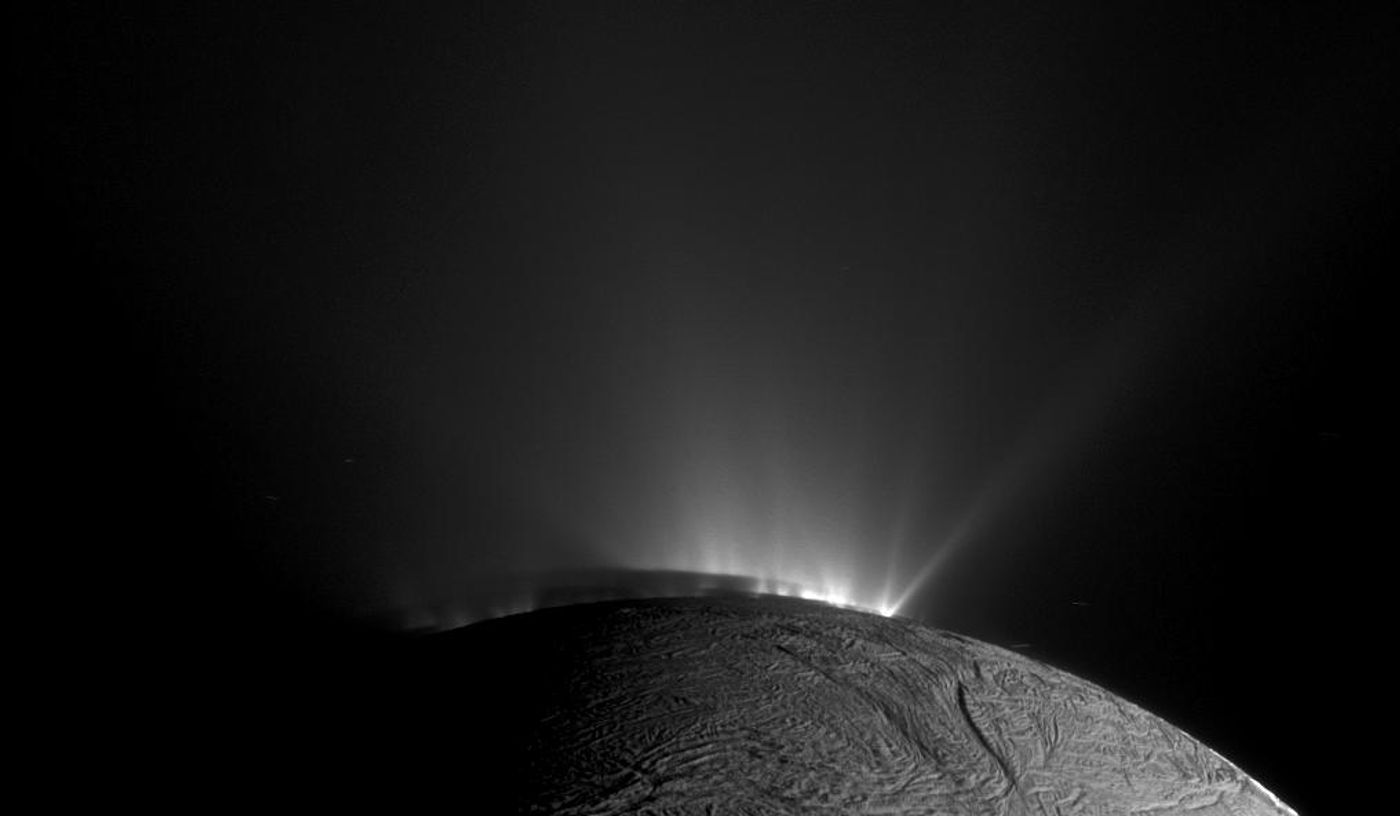Hydrogen Cyanide Discovery on Saturn's Moon Enceladus: A Leap Forward in Astrobiology
Could Saturn’s icy moon, Enceladus, hold the ingredients for life as we know it? This is what a recent study published in Nature Astronomy hopes to address as a team of researchers from Harvard University and the NASA Jet Propulsion Laboratory (JPL) investigate data obtained by NASA’s Cassini spacecraft as it flew through the plumes of Enceladus during its mission in the 2010s. While the data initially identified water, carbon dioxide, methane, ammonia, and hydrogen within the plumes, recent re-analysis of the data suggests that hydrogen cyanide might be present in the small moon, as well. The identification of hydrogen cyanide is profound as it is central to the creation of life as we know it.
Image of the geyser-like plumes emanating from the south pole of Enceladus taken by NASA’s Cassini spacecraft in 2010. Cassini later sampled the plumes and researchers are still making new discoveries from the data, as noted by this recent study. (Credit: NASA/JPL-Caltech/Space Science Institute)
“Our work provides further evidence that Enceladus is host to some of the most important molecules for both creating the building blocks of life and for sustaining that life through metabolic reactions,” said Jonah Peter, who is a PhD student at Harvard University but performed most of the research while previously working at NASA JPL. “Not only does Enceladus seem to meet the basic requirements for habitability, we now have an idea about how complex biomolecules could form there, and what sort of chemical pathways might be involved.”
Artist’s illustration displaying the interior of Saturn’s icy moon, Enceladus. Ice layer thickness is not to scale. (Credit: NASA/JPL-Caltech)
For the study, the team used statistical analyses to re-analyze Cassini data collected more than 10 years ago from Cassini’s Ion and Neutral Mass Spectrometer (INMS) as it flew through the geyser-like plumes emanating from the south pole of Enceladus. While the primary job for the INMS was to examine the ice grains, ions, and gas orbiting the planet Saturn, scientists were able to use it to examine the plumes from Enceladus.
As noted, scientists initially identified water, carbon dioxide, methane, ammonia, and hydrogen within the plumes. However, using statistical analyses and quantifying the data allowed this most recent study to identify hydrogen cyanide and other molecules, including acetylene, propene, and ethane. The reason why hydrogen cyanide is profound is due to being a precursor to amino acids and nucleic acids, which are essential to life on Earth.
“There are many potential puzzle pieces that can be fit together when trying to match the observed data,” said Peter. “We used math and statistical modeling to figure out which combination of puzzle pieces best matches the plume composition and makes the most of the data, without overinterpreting the limited dataset.”
While this study does not confirm that life exists on Saturn’s icy moon, it nonetheless opens the doors for further investigation into what other life-bearing molecules and compounds could exist there.
As always, keep doing science & keep looking up!
Sources: NASA, Nature Astronomy, European Space Agency, NASA JPL










